MIS10E testbank CH11 PDF

| Title | MIS10E testbank CH11 |
|---|---|
| Author | Mohammed Salim |
| Course | Corporate Financial Management |
| Institution | Al Akhawayn University |
| Pages | 19 |
| File Size | 193.3 KB |
| File Type | |
| Total Downloads | 53 |
| Total Views | 146 |
Summary
Download MIS10E testbank CH11 PDF
Description
Chapter 11
Managing Knowledge True-False Questions 1.
Knowledge residing in the minds of employees that has not been documented is called explicit knowledge. Answer: False
2.
Reference: p. 436
Difficulty: Medium
Reference: p. 436
Difficulty: Easy
Reference: p. 437–438
Difficulty: Medium
Reference: p. 438
Knowledge workers are primarily clerical and data workers who usually do not possess high levels of education. Answer: False
9.
Difficulty: Easy
Semistructured information is all the knowledge in a firm that resides in the heads of experienced employees. Answer: False
8.
Reference: p. 433
Structured knowledge is explicit knowledge that exists in informal documents. Answer: False
7.
Difficulty: Easy
COPs are formal social networks of professionals and employees within and outside the firm who have similar work-related activities and interests. Answer: False
6.
Reference: p. 432
The CIO is a senior executive who is responsible for the firm’s knowledge management program. Answer: False
5.
Difficulty: Easy
Knowledge is universally applicable and easily moved. Answer: False
4.
Reference: p. 432
Knowledge can reside in e-mail, voice mail, graphics, and unstructured documents as well as structured documents. Answer: True
3.
Difficulty: Medium
Difficulty: Easy
Reference: p. 448
VRML is platform dependent, operates over a minicomputer, and requires large amounts of bandwidth. Answer: False
Difficulty: Medium
175
Reference: p. 450
10.
Expert systems are the primary tools used for knowledge discovery. Answer: False
11.
Difficulty: Medium
Reference: p. 455
Difficulty: Easy
Reference: p. 455
Difficulty: Medium
Reference: p. 455
Difficulty: Medium
Reference: p. 455–457
Because neural network applications cannot always explain why they arrive at a particular solution, they are not well suited for use in the medical profession. Answer: False
19.
Reference: p. 452
Fuzzy logic systems “learn” patterns from large quantities of data by sifting through data, searching for relationships, building models, and correcting over and over again the model’s own mistakes. Answer: False
18.
Difficulty: Medium
Fuzzy logic can describe a particular phenomenon or process linguistically and then represent that description in a small number of flexible rules. Answer: True
17.
Reference: p. 452
Case-based reasoning is not well-suited for diagnostic systems in medicine. Answer: False
16.
Difficulty: Easy
Expert systems work by applying a set of AND/OR rules against a knowledge base, both of which are extracted from human experts. Answer: False
15.
Reference: p. 460
Given their limitations, expert systems are seldom used for making discrete, highly structured decision-making situations. Answer: False
14.
Difficulty: Medium
Expert systems capture the knowledge of skilled employees in the form of a set of rules in a software system that can be used by others in the organization. Answer: True
13.
Reference: p. 451
Intelligent agents can discover underlying patterns, categories, and behaviors in large data sets. Answer: False
12.
Difficulty: Easy
Difficulty: Medium
Reference: p. 457–458
Intelligent agents are used only for specific, repetitive and predictable tasks. Answer: False
Difficulty: Medium
176
Reference: p. 460
20.
Shopping bots are a form of intelligent agent. Answer: True
Difficulty: Medium
Reference: p. 460
Multiple-Choice Questions 21.
Analysis What capability of its new knowledge management system allowed Southern Company to experience greater productivity from its engineers? a. b. c. d.
Knowledge repository Expertise location and management Intelligent techniques Learning management
Answer: a
Difficulty: Medium
Reference: p. 429–430
Analysis in terms of categorize 22.
The percentage of Gross Domestic Product of the United States that is produced by the knowledge and information sectors is estimated to be: a. b. c. d.
20 percent. 40 percent. 60 percent. 80 percent.
Answer: c 23.
Reference: p. 431
The flow of events or transactions captured by an organization’s system describes: a. b. c. d.
information. data. wisdom. knowledge.
Answer: b 24.
Difficulty: Hard
Difficulty: Easy
Reference: p. 432
Expertise and experience of organizational members that has not been formally documented best describes: a. b. c. d.
wisdom. information. data. tacit knowledge.
Answer: d
Difficulty: Medium
177
Reference: p. 432
25.
Knowledge that resides in the minds of employees that has not been documented is called: a. b. c. d.
tacit knowledge. organizational memory. standard operating procedures. corporate culture.
Answer: a 26.
change management. knowledge networking. the knowledge value chain. organizational learning.
Answer: d
Reference: p. 433
knowledge culture. knowledge discovery. organizational and management capital. organizational routine.
Answer: c
Difficulty: Hard
Reference: p. 434
These systems digitize, index, and tag documents according to a coherent framework. a. b. c. d.
Wikis CAD Document management LMS
Answer: c 29.
Difficulty: Medium
The set of business processes, culture, and behavior required to obtain value from investments in information systems is one type of : a. b. c. d.
28.
Reference: p. 432
Changing organizational behavior by sensing and responding to new experience and knowledge is called: a. b. c. d.
27.
Difficulty: Medium
Difficulty: Easy
Reference: p. 435
The senior executive responsible for the firm’s knowledge management program is the: a. b. c. d.
CTO. CIO. CKO. CEO.
Answer: c
Difficulty: Easy
178
Reference: p. 436
30.
Informal social networks of professionals and employees within and outside the firm who have similar work-related activities and interests are called: a. b. c. d.
communities of practice. communities of professionals. communities of interest. communities of knowledge.
Answer: a 31.
b. c. d.
Management information systems, decision support systems, and transaction processing systems. Enterprise systems, customer support systems, and supply chain management systems. Database management systems, expert systems, and knowledge work systems. Enterprise-wide knowledge management systems, knowledge work systems, and intelligent techniques.
Answer: d
Reference: p. 436
KWS LMS Wikis CAD systems
Answer: a
Difficulty: Easy
Reference: p. 436
Difficulty: Easy
Reference: p. 437
Fuzzy logic is a type of: a. b. c. b.
data mining. neural network. intelligent technique. business intelligence.
Answer: c 34.
Difficulty: Hard
These are specialized systems built for engineers, scientists, and other knowledge workers charged with discovering and creating new knowledge for a company: a. b. c. d.
33.
Reference: p. 436
Which of the following are major types of knowledge management systems? a.
32.
Difficulty: Medium
A system for organizing formal documents and reports in a repository where it can be accessed throughout the organization best describes: a. b. c. d.
database management system. expert system. structured knowledge system. neural network.
Answer: c
Difficulty: Medium
179
Reference: p. 438
35.
Knowledge that already exists inside a firm in the form of formal reports or presentations is categorized as: a. b. c. d.
structured knowledge. semistructured knowledge. tacit knowledge. unstructured knowledge.
Answer: a 36.
KWS. knowledge repository. document database. document management system.
Answer: b
Reference: p. 438
Ensuring that everyone in the branches had access to the same resources Freeing up partners from client work in order to populate the database Ensuring that junior employees used the KM system Persuading senior partners from hoarding their personal experience
Answer: b
Difficulty: Medium
Reference: p. 442
Once a knowledge taxonomy is developed, documents are all __________ with the proper classification. a. b. c. d.
tagged linked tupled referenced
Answer: a 39.
Difficulty: Medium
What management-oriented challenge did Stikeman Elliot face in building a successful KM system? a. b. c. d.
38.
Reference: pp. 437–438
A collection of internal and external knowledge in a single location for more efficient management and utilization by the organization is called a: a. b. c. d.
37.
Difficulty: Easy
Difficulty: Medium
Reference: p. 443
Which of the following is a collaboration tool used to support knowledge management systems? a. b. c. d.
Blogs Wikis Social bookmarking All of the above
Answer: d
Difficulty: Medium
180
Reference: pp. 445–447
40.
As discussed in the Interactive Session: Technology, what is one of the drawbacks to using social bookmarking within a corporate knowledge management system? a. b. c. d.
Lack of standards in taxonomy Lack of integration with other products Lack of ability to categorize bookmarks Proliferation and duplication of bookmarks
Answer: a 41.
investment workstation. organizational learning system. employee enrichment system. learning management system.
Answer: d
Reference: p. 447
office systems. schools and universities. imaging systems. data transferring systems.
Answer: a
Difficulty: Medium
Reference: p. 448
A ________________________ is very important to a knowledge worker’s system. a. b. c. d.
careful filing system financial analysis system CAD capability user-friendly interface
Answer: d 44.
Difficulty: Medium
Most knowledge workers require specialized knowledge work systems, but they also rely on: a. b. c. d.
43.
Reference: p. 446
Tools for the management, delivery, tracking, and assessment of various types of employee learning best describes: a. b. c. d.
42.
Difficulty: Medium
Difficulty: Medium
Reference: p. 449
_______________________________ often are designed and optimized for the specific tasks to be performed. a. b. c. d.
Graphics programs Knowledge workstations Virtual simulators CAD stations
Answer: b
Difficulty: Medium
181
Reference: p. 449
45.
CAD/CAM workstations: a. b. c. d.
provide engineers, designers, and factory managers with precise control over industrial design and manufacturing. provide an important source of expertise for organizations. allow groups to work together on documents. are high-end PCs used in the financial sector to analyze trading situations instantaneously and facilitate portfolio management.
Answer: a 46.
Computer-aided design 3D visualization Investment workstations Case-based reasoning
Answer: d
Reference: pp. 449–451
Knowledge networks Case based reasoning Computer-aided design VRML
Answer: b
Difficulty: Hard
Reference: p. 451–461
Virtual reality applications for the Web use a standard called: a. b. c. d.
CADDIS VRML KWSVR TCP/IP
Answer: b 49.
Difficulty: Hard
Which of the following is a type of intelligent technique? a. b. c. d.
48.
Reference: p. 451
Which of the following would not be classified as a knowledge work system? a. b. c. d.
47.
Difficulty: Medium
Difficulty: Medium
Reference: p. 450
Virtual reality systems: a. b. c. d.
provide engineers, designers, and factory managers with precise control over industrial design and manufacturing. provide an important source of expertise for organizations. allow groups to work together on documents. provide architects, engineers, and medical workers with precise, photorealistic simulations of objects.
Answer: d
Difficulty: Medium
182
Reference: p. 450
50.
Investment workstations: a. b. c. d.
provide engineers, designers, and factory managers with precise control over industrial design and manufacturing. provide an important source of expertise for organizations. allow groups to work together on documents. are high-end PCs used in the financial sector to analyze trading situations instantaneously and facilitate portfolio management.
Answer: d 51.
Expert systems Transaction processing systems Case-based reasoning Data mining
Answer: d
Reference: p. 451
Expert systems Case-based reasoning Fuzzy logic Neural networks
Answer: d
Difficulty: Hard
Reference: p. 451
Technology that consists of computer-based systems that attempt to emulate human behavior is called: a. b. c. d.
fuzzy logic. neural networks. AI technology. genetic algorithms.
Answer: c 54.
Difficulty: Medium
Which of the following are not used to capture tacit knowledge? a. b. c. d.
53.
Reference: p. 451
Which of the following is used for knowledge discovery? a. b. c. d.
52.
Difficulty: Easy
Difficulty: Medium
Reference: p. 452
An inference engine is: a. b. c. d.
a strategy for searching the rule base in an expert system that begins with information entered by the user. the programming environment of an expert system. a method of organizing expert system knowledge into chunks. a strategy used to search through the rule base in an expert system by forward chaining or backward chaining.
Answer: d
Difficulty: Medium
183
Reference: p. 452
55.
Forward chaining is: a. b. c. d.
a strategy for searching the rule base in an expert system that begins with information entered by the user. the programming environment of an expert system. a method of organizing expert system knowledge into chunks. a strategy for searching the rule base in an expert system that begins with a hypothesis.
Answer: a 56.
b. c. d.
a strategy for searching the rule base in an expert system that begins with information entered by the user. the programming environment of an expert system. a method of organizing expert system knowledge into chunks. a strategy for searching the rule base in an expert system that begins with a hypothesis.
Answer: d
Difficulty: Medium
Reference: p. 452
Which of the following is the expert system used by Countrywide Funding Corp. to make preliminary creditworthiness decisions on loan requests? a. b. c. d.
AskMe EVAL CLUES CBR
Answer: c 58.
Reference: p. 452
Backward chaining is: a.
57.
Difficulty: Medium
Difficulty: Hard
Reference: p. 454
Expert systems: a. b. c. d.
solve problems too difficult for human experts. are based on DO WHILE rules. work in very limited domains. share characteristics with mainframe computing.
Answer: c
Difficulty: Medium
184
Reference: p. 454
59.
Analysis It is unlikely you could represent the knowledge in the Encyclopedia Britannica with an expert system because: a. b. c. d.
there is no one expert who understands all the material contained within the encyclopedia. the knowledge changes radically over a short time. not all the knowledge in the encyclopedia can be represented in the form of IF-THEN rules. the knowledge is too general.
Answer: c
Difficulty: Medium
Reference: p. 454
Analysis in terms of appraise 60.
Virtually all expert systems deal with problems of: a. b. c. d.
policy development. classification. logic and control. high complexity.
Answer: b 61.
Reference: p. 455
Expert systems are expensive and time-consuming to maintain: a. b. c. d.
because their rule base is so complex. because they rely on equipment that becomes outdated. because their rules must be reprogrammed every time there is a change in the environment, which in turn may change the applicable rules because only the person who created the system knows exactly how it works, and may not be available when changes are needed.
Answer: c 62.
Difficulty: Hard
Difficulty: Hard
Reference: p. 455
In this technique, descriptions of past experiences of human specialists are stored in a database for later retrieval when the user encounters a situation with similar characteristics. a. b. c. d.
CBR Fuzzy logic Data mining LMS
Answer: a
Difficulty: Easy
185
Reference: p. 455
63.
Evaluation You are an automotive engineer working on an application that will automatically parallel park a car. The intelligent technique you may find most useful is: a. b. c. d.
case-based reasoning. artificial intelligence. fuzzy logic. expert system.
Answer: c
Difficulty: Medium
Reference: pp. 455–457
Evaluation in terms of choose 64.
Hardware and software that attempts to emulate the processing patterns of the biological brain best describes: a. b. c. d.
neural network. expert system. case-based reasoning. fuzzy logic.
Answer: a 65.
Reference: p. 457
Genetic algorithms: a. b. c. d.
develop solutions to particular problems using fitness, crossover, and mutation. represent knowledge as groups of characteristics. do not work for m...
Similar Free PDFs

MIS10E testbank CH11
- 19 Pages

MIS10E testbank CH04
- 20 Pages

MIS10E-testbank-CH02
- 21 Pages

MIS10E testbank CH03
- 20 Pages

MIS10E testbank CH02
- 21 Pages

MIS10E testbank CH15
- 19 Pages

MIS10E testbank CH10
- 16 Pages
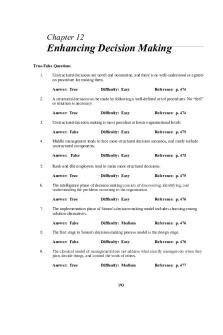
MIS10E testbank CH12
- 18 Pages
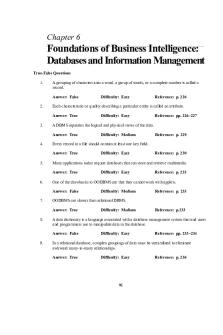
MIS10E testbank CH06
- 18 Pages

Ch11
- 28 Pages
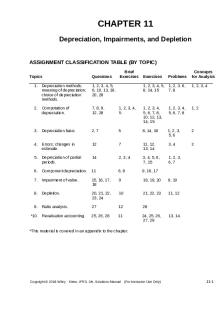
Ch11 - Solution manual ch11
- 83 Pages

Ch11 - kunjaw
- 95 Pages
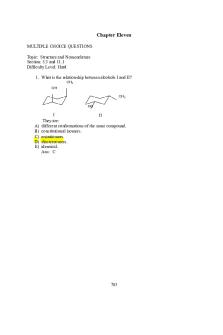
Ch11 - dsdsdssssssssssssssssssssss
- 97 Pages
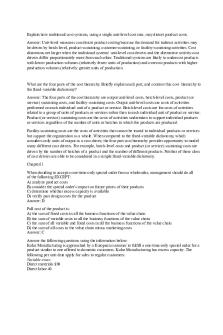
Ch11 - nice
- 16 Pages

Ch11 - accounting
- 49 Pages

Review ch11
- 3 Pages
Popular Institutions
- Tinajero National High School - Annex
- Politeknik Caltex Riau
- Yokohama City University
- SGT University
- University of Al-Qadisiyah
- Divine Word College of Vigan
- Techniek College Rotterdam
- Universidade de Santiago
- Universiti Teknologi MARA Cawangan Johor Kampus Pasir Gudang
- Poltekkes Kemenkes Yogyakarta
- Baguio City National High School
- Colegio san marcos
- preparatoria uno
- Centro de Bachillerato Tecnológico Industrial y de Servicios No. 107
- Dalian Maritime University
- Quang Trung Secondary School
- Colegio Tecnológico en Informática
- Corporación Regional de Educación Superior
- Grupo CEDVA
- Dar Al Uloom University
- Centro de Estudios Preuniversitarios de la Universidad Nacional de Ingeniería
- 上智大学
- Aakash International School, Nuna Majara
- San Felipe Neri Catholic School
- Kang Chiao International School - New Taipei City
- Misamis Occidental National High School
- Institución Educativa Escuela Normal Juan Ladrilleros
- Kolehiyo ng Pantukan
- Batanes State College
- Instituto Continental
- Sekolah Menengah Kejuruan Kesehatan Kaltara (Tarakan)
- Colegio de La Inmaculada Concepcion - Cebu